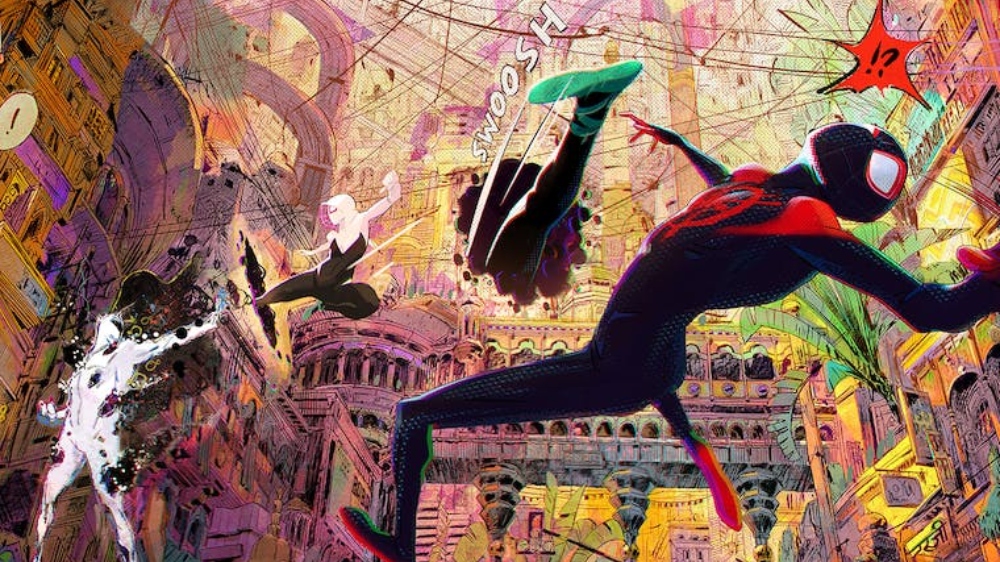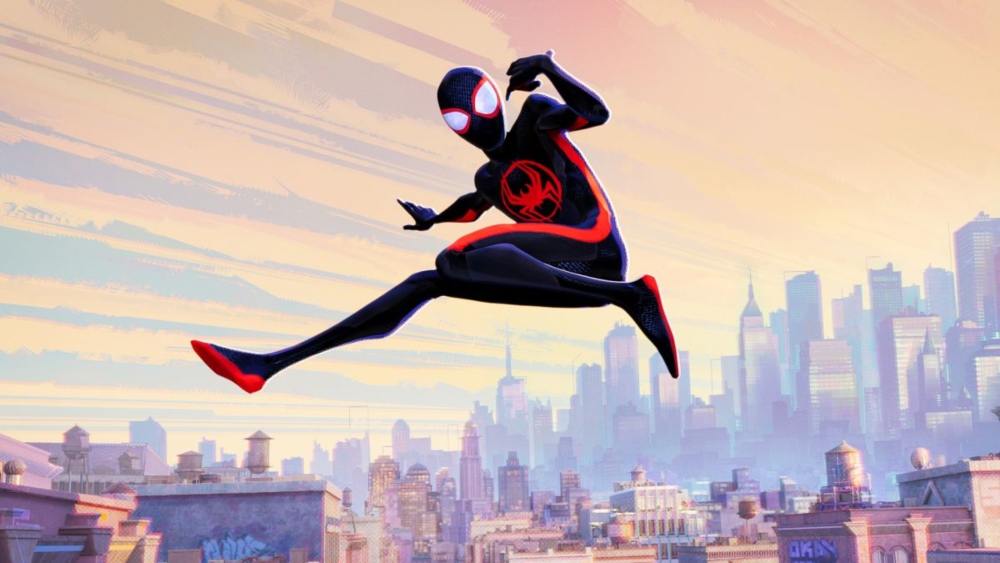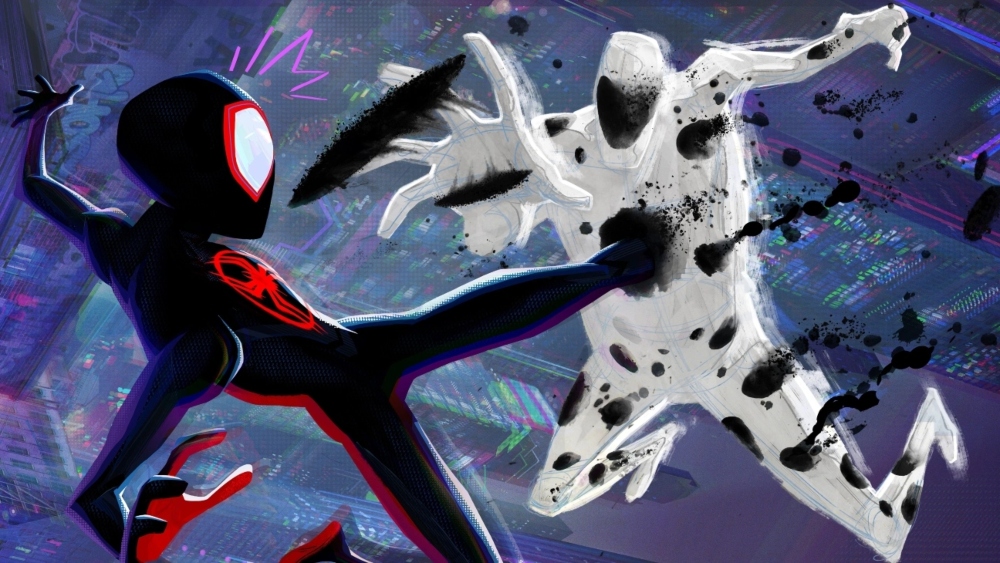
The Marvel Cinematic Universe has not yet perfected the concept of the “multiverse,” as the related notion that no occurrence is truly final because it can be reversed by crossing the dimensions has yielded a series of unsatisfying and seemingly inconsequential stories. At a minimum, these reality-altering concepts are ill at ease when purportedly real-life, flesh-and-bone characters are involved, with the warring notions of realism and illusion at fundamental odds. Fortunately, we live in the dimension where Spider-Man: Across the Spider-Verse swings into theaters this weekend, as it’s the best “multiverse” movie released so far.
Written by Phil Lord, Chris Miller, and David Callaham, the sequel takes place in a world where Peter Parker has died and the mantle of Spider-Man has been taken over by rebellious and charismatic teenager Miles Morales (voiced by Shameik Moore). There is no M.J. Instead, Gwen Stacy (voiced by Hailee Steinfeld) is both Miles’ love interest and also Spider-Woman. And there is no Uncle Peter or Aunt May. Here, Miles’ parents (voiced by Brian Tyree Henry and Lauren “Luna” Velez) are alive and well in NYC, where they’re both emergency service workers. But you know all this already, as Spider-Man: Into the Spider-Verse, made a huge splash in 2018 before winning the Oscar for Best Animated Feature.
That landmark film made the argument for superhero stories being even better when told in their natural milieu — animation — and this sequel is at least as good if not better than the original. Across the Spider-Verse finds Miles slightly more confident in his ability to fully confront the existence of an infinitude of Spider-People across space and time. The leader of this motley crew is the curmudgeonly Spider-Man 2099 version, voiced beautifully by Oscar Isaac. There’s also a pregnant Spider-Woman voiced by Issa Rae, a virtual reality Spider-Woman voiced by Amandla Stenberg, and a goofy clone of Peter Parker voiced by Andy Sandberg. Meanwhile, Jason Schwartzman voices the primary villain, The Spot, whose disfigured shape allows him, too, to travel across dimensions.

The contours of The Spot’s plan for revenge on Spider-Man — and world domination, of course — is fairly beside the point, as the devil is in the details here, by which I mean the film’s dazzling, beautifully colored, animation; its stunning and entirely original score from Daniel Pemberton; and kinetic editing courtesy of Mike Andrews that evokes both the wham-bam style of old TV shows featuring superheroes in tights and the impatient demands of modern-day audiences. From a technical perspective, Spider-Man: Across the Spider-Verse is a visual and auditory marvel that’s indicative of how Lord and Miller — working alongside directors Justin K. Thompson, Kemp Powers, and Joaquim Dos Santos — are growing confident in this style. What perhaps started as a random experiment gone right has led to an exhilarating sequel that dispels any notion that the first film and its unique sense of style was a one-hit-wonder.
As jaw-dropping as the animation is, the story is also compelling, and there is much to admire in the subtle but significant ways in which Lord, Miller, and Callaham get their points across. Naturally, Miles and his family infuse this world with greater diversity than in previous Spider-Man movies, and the Spider-People who were chosen from across various galaxies also speak to the writers’ view of a rapidly evolving and at times oppressive world. Where the last live-action movie of this franchise, Spider-Man: No Way Home, embarrassed itself by parading physically washed-up and emotionally forgotten superheroes, Across the Spider-Verse makes the most of its animated medium, flexing its creative muscles and injecting a breath of fresh air and tremendous originality into the Spider-franchise.
And this is where the animated nature of this film is key. The concepts that we are being asked to accept over and over again in the regular MCU are stretching the limits of our suspension of disbelief, and have almost entirely killed off any notion of originality. Because of the never-ending parade of actions that are reversed and universes that make each other feel absolutely meaningless, every one of those movies has now started to feel entirely fake, distant, and unimportant. Across the Spider-Verse, by contrast, is a cartoon — and proudly so — so it can use the inherent fakeness of its presentation to its advantage. It helps, of course, that Miles is written as an inherently likable character, and that the dumpier versions of the Spider-People he encounters are sympathetic, too. But the notion that none of this is real is a feature, not a bug, one that flips the tediousness of comic book movies on its head and gives a whole new life to Spider-Man’s otherwise well-worn story.

At most, one may say that Across the Spider-Verse is a bit too high on its own supply, bloating some of the otherwise impressive action sequences unnecessarily (and, with them, the total runtime of 140 minutes). While the new Spider-People continue to entertain, and the film is highly original, that originality has its limits, as The Spot isn’t terribly inventive, and the film’s title telegraphs a certain linearity to what portends to be an otherwise masterful sequel. You can’t help but wonder which temporal adjective will pop into the filmmakers’ heads next, but here’s hoping they can come up with something a bit more inventive and descriptive than “Into,” “Across,” and “Beyond,” which is the title of the next film since this one (naturally) ends on a cliffhanger.
These small issues aside, Spider-Man: Across the Spider-Verse is assuredly one of the most delightful films of the summer and a blockbuster that should satisfy audiences of all ages. At its core, it protects the original Spider-Man brand identity while continuing to completely reinvent it and adapt it for a new generation. The kaleidoscope of its characters is a part of that reinvention, but really, it is the endlessly exciting and creative animation that does the heavy lifting here and will leave you in total awe of what you are seeing — just as a good movie should.
Grade: A-
Spider-Man: Across the Spider-Verse is now playing in theaters nationwide courtesy of Sony Pictures.





